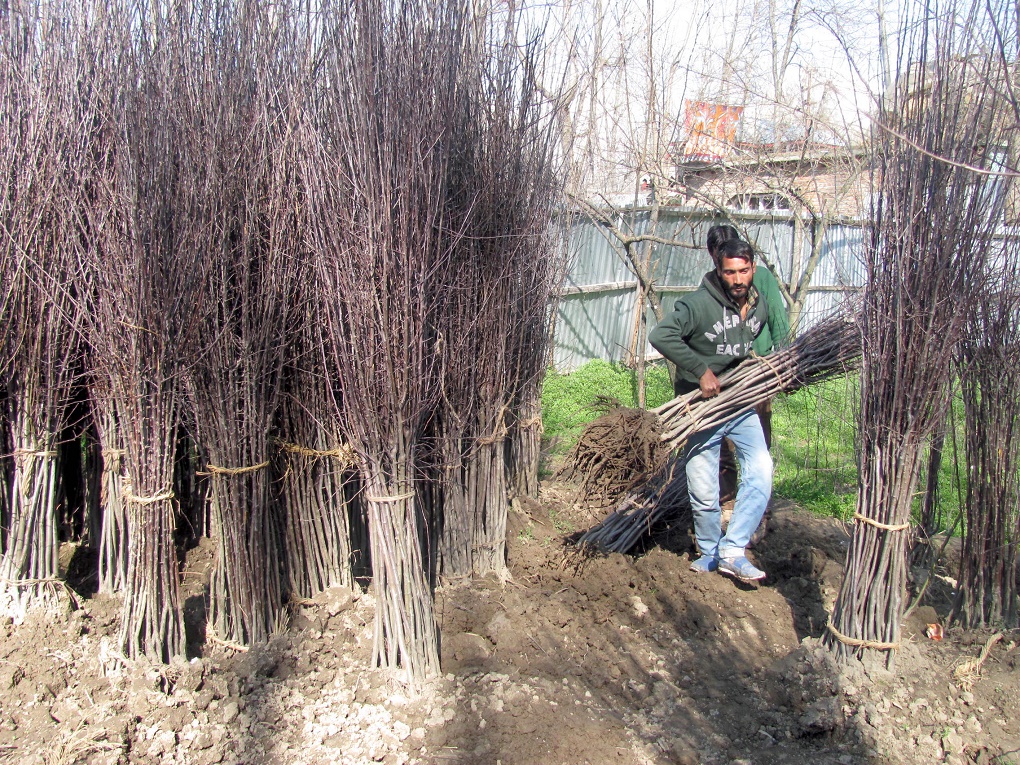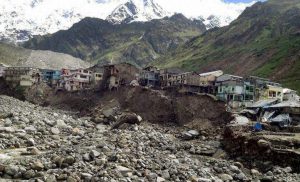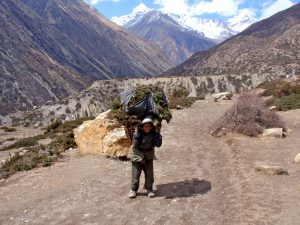Kashmir’s deforested hills have been the prime cause of the heavy siltation of its water bodies. This is now being aggravated by changes in land use due to water scarcity in the catchments of the Jhelum – caused partially by climate change – adding to the siltation load in the river that feeds the Wular Lake, Kashmir’s largest flood basin.
A study carried out by a team lead by Shakil Romshoo, head of Kashmir University’s Earth Sciences department, in south Kashmir forests has reported massive degradation in the forest area and adjacent catchments. “Our analysis indicated that 18% of the forested area has degraded into sparse forest or scrublands from 1972 to 2010, and the areas under croplands have decreased by 24% as people shifted from irrigation-intensive agriculture to orchard farming while settlements showed a 397% increase during the observation period,” the study says.
The hills of north Kashmir range have immensely contributed towards erosion and subsequent siltation within the Wular Lake due to deforestation and glacial conditions, according to another study. “These ranges bordering the lake area towards its north-eastern, north-western and eastern sides have been releasing their transported sediments within the lake,” says the study.
“The Wular lake today is overexploited due to the land acquisition and is subjected to large siltation rates. These processes have been accelerated by the physical deterioration of the hill slopes around the Wular catchment. The very existence of the Wular lake is, therefore, threatened due to overexploitation of resources and encroachment by burgeoning population,” the study adds.
Land-use change and siltation
Recent studies suggest that farmers are increasingly shifting from paddy cultivation to fruit production in the wake of water scarcity in recent years. There are economic reasons as well, as farmers believe orchards may provide a better return on investment.
According to a paper published by Shakil Romshoo and Irfan Rashid, agricultural lands are getting converted into orchards mainly because a lower amount of water is required to grow fruit trees.
The irrigation facilities in Kashmir are not well organised. As per a recent economic survey, only 41% of Kashmir’s agricultural land has irrigation facilities. The rest of the land depends on rainfall.
“We find it more sensible to grow fruit than rice because for growing rice availability of water is a must,” Abdul Jabbar Mir, a farmer in south Kashmir’s Kiomoo, told thethirdpole.net.
Officials of Kashmir’s Meteorology Department said that the annual normal precipitation for the Kashmir Himalayan region is 660mm, but data for the last 11 years indicate wide variations from the norm.
According to a policy document of the Jammu and Kashmir government, the region has witnessed a huge shift from paddy cultivation to horticulture in recent decades. In 1953-54, area under fruit cultivation was just 12,400 hectares with a production of only about 16,000 metric tons. At present, an area of 325,000 hectares of land is under fruit cultivation and production has touched an all-time high of 2.2 million metric tons.

Akhtar Hussain Malik, who teaches Botany in Kashmir University, said that since a lot of new orchards are being formed, “their soil remains dry and loose without canopy cover for some years until the trees grow up.” This, he said, makes it easy for soil to get washed off by rains.
Sajjad Hassan Baba, an agricultural economist and researcher at Sher-e-Kashmir University for Agricultural Sciences and Technology (SKUAST), agreed. But he added that siltation because of orchards must be a very small percentage of the siltation caused by degradation of forests.
More silt, more risk of flooding
The addition of even a little more silt is dangerous. Kashmir is facing a perpetual flood threat as the carrying capacity of its water bodies has dwindled in recent years due to siltation. In other words they cannot absorb sudden large influxes of water, and this leads to floods. In recent months, the government of Jammu & Kashmir has spent millions of dollars for de-siltation of water bodies and is planning more investment for de-siltation in coming months.
“An estimated one-fifth of the water holding capacity of our largest flood basin, Wular Lake, has been reduced due to siltation and encroachments,” WUCMA’s Coordinator, Wani, told thethirdpole.net.
According to him, an area of 27 square kilometres of Wular has been categorised as severely silted, as per the Management Action Plan for Wular. The lake has been reduced to an area of 57 square kilometres while revenue records suggest it is was earlier spread over an area of 131 sq. km.
WUCMA has been working on de-siltation of the lake since 2012, but has so far managed de-silting only 1 square kilometre of the silted area. He said that the treated portion of the lake has been restored back to its original position as silt load of nearly one million cubic meters stands removed at a cost of INR 600 million (USD 9 million).
An estimated 20 million cubic meters of slit load, Wani said, is yet to be dredged out of the lake. He added that WUCMA will soon start work to de-silt the remaining amount with the help of a INR 4 billion (USD 60 million) project.
In Jhelum River, a project for de-silting an estimated 1.6 million cubic meters of sediment is going on. Close to one million cubic meters of silt has been dredged out so far.
Stopping the sediments
Experts have called for massive afforestation programmes in the catchments of Jhelum in both degraded forests and barren lands; and stopping conversion of paddy land into orchards for curbing the siltation of water bodies.
“In this context the efforts can include blanket ban on expansion of settlements along river embankments and naturally vegetated areas, reforestation of degraded forest areas, afforestation of barren lands, construction of check dams, treatment of house-hold sewage before its discharge into the rivers and water bodies, etc.,” recommends the study of Romshoo and others.
Baba of SKUAST also suggests that a major afforestation programme should be launched in the degraded forests of Kashmir for securing the catchment area of Kashmir’s water bodies. Otherwise in an era of climate change, with increasing risks of large amounts of rainfall during shorter periods, Kashmir will be increasingly a site of floods and destruction.
![<p>A Kashmiri man near a Budgam forest shows the degradation caused to forests over the past few decades [image by: Athar Parvaiz]</p>](https://dialogue.earth/content/uploads/2017/09/A-Kashmiri-man-near-a-Budgam-forest-shows-the-degradation-caused-to-firests-over-the-past-few-decades-Photo-__-Athar-Parvaiz-.jpg)








